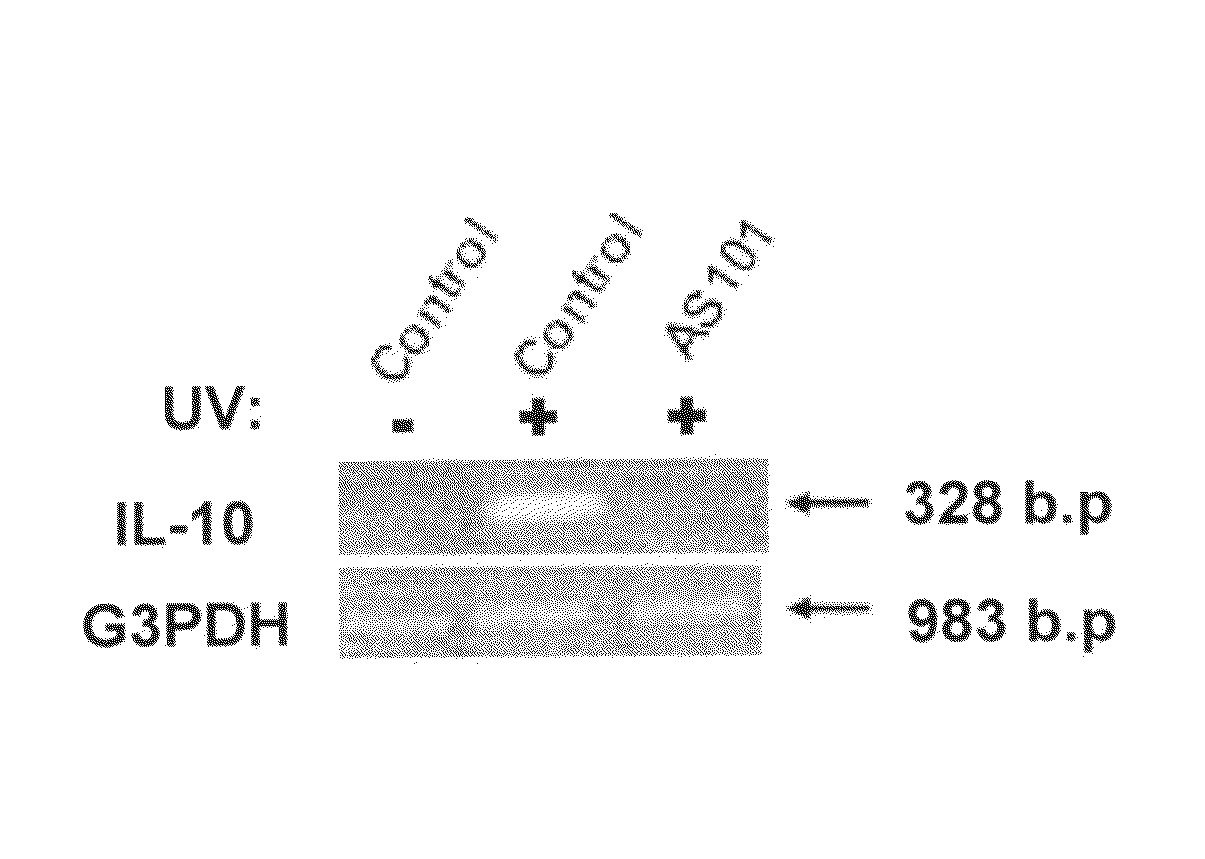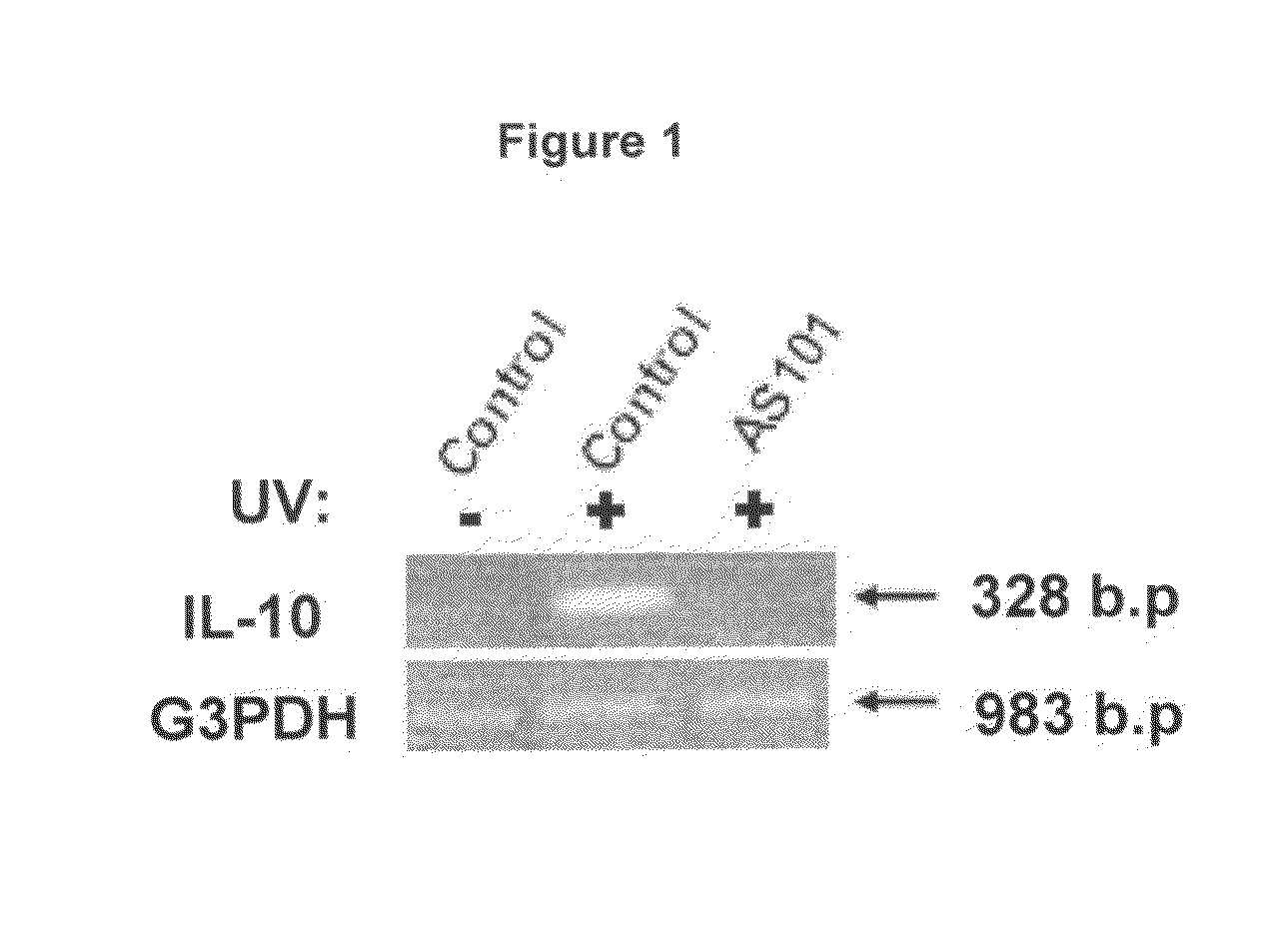Use of tellurium compounds for protection from ultra-violet radiation
a technology of ultraviolet radiation and tellurium compounds, which is applied in the direction of biocide, plant growth regulators, animal husbandry, etc., can solve the problems of aging of the skin, dna damage and possibly skin cancer, and many of what was once attributed to aging are now known to be caused
- Summary
- Abstract
- Description
- Claims
- Application Information
AI Technical Summary
Benefits of technology
Problems solved by technology
Method used
Image
Examples
example 1
Induction of Suction Blisters
[0279]In normal volunteers, suction blisters were induced by vacuum and heat on normal skin, or on UVB-irradiated skin of volar forearms 24 h after exposure. Single cell suspensions of epidermal cells were prepared by limited trypsinization of the blister roof. Briefly, epidermal sheets were washed in PBS (Biofluids. Roekville. MD) and floated in 0.5% trypsin (United Stares Biochemical Corp. Cleveland. OH) for 45 min al 37° C., transferred to HBSS (Biofluids) containing 0.05 DNase (Sigma Chemical Co. SI. Louis. MO) and 10% heat-inactivated pooled human AB+ serum (Sigma Chemical Co.) and disaggregated by repeated aspirations and expulsions through a syringe. Cells were then passed through a 100 μm nylon mesh and washed 3 times in PBS (Biofluids). Dry cell pellet were stored at −70° C. until mRNA extraction.
example 2
UVB Irradiation In Vivo
[0280]UVB irradiation in vivo was performed with 4 FS20 fluorescent lamps (Sylvania. Springfield. Va.) that emit wavelengths between 280 and 320 nm with a peak at 313 nm. Light intensity was determined using an IL-770 Germicidal-Erythemal radiometer (international Light Inc. Newburyport. Me.) equipped with a sensor and a 313-nm filter. In vivo irradiation was performed on volar forearms of normal volunteers after prior determination of their minimal erythema dose. Two areas (approximately 3.0 cm2 each) on the right forearm were irradiated with UVB that one area was treated with AS101 (4% in Vaseline) and the other one with Vaseline alone. After 24 h. blisters were induced at the two irradiated sites and blister roofs of approximately 0.8 cm2 each were removed. Blisters were also induced on the non-irradiated (control) left forearm.
example 3
Extraction of mRNA
[0281]The frozen pellets of epidermal cells were dissolved by repeated pipetting 800 μl of lysis bufer and transferred to RNase-free Eppendorf tubes containing 500 μg of superparamagnetic polystyrene Dynaheads Oligo(dT)25 (Dynal. Great Neck. N.Y.). The beads had been previously washed twice with lysis bufer using a Dynal MPC magnet (Dynal). Preparations containing both beads and epidermal cell extracts were then incubated on ice for 5 min and washed twice in washing. Two final washings were performed in washing bufer without SDS. poly (A+). RNA was then released from the beads by heating for 2 min al 65° C. in distilled RNase-free water and the beads were removed using the Dynal MPC magnet. The concentration of mRNA was measured on a Beckman DU-64 spectrophotometer employing a 5 μl Ultra microcell.
PUM
| Property | Measurement | Unit |
|---|---|---|
| wavelength | aaaaa | aaaaa |
| wavelength | aaaaa | aaaaa |
| wavelength | aaaaa | aaaaa |
Abstract
Description
Claims
Application Information
 Login to View More
Login to View More - R&D
- Intellectual Property
- Life Sciences
- Materials
- Tech Scout
- Unparalleled Data Quality
- Higher Quality Content
- 60% Fewer Hallucinations
Browse by: Latest US Patents, China's latest patents, Technical Efficacy Thesaurus, Application Domain, Technology Topic, Popular Technical Reports.
© 2025 PatSnap. All rights reserved.Legal|Privacy policy|Modern Slavery Act Transparency Statement|Sitemap|About US| Contact US: help@patsnap.com



